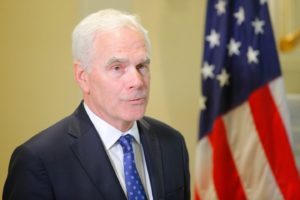More evidence of soaring demand: Oklahoma’s new universal school choice program already full
The inaugural year of the Oklahoma Parental Choice Tax Credit was a huge success, demonstrating billowing demand for school choice.
Indeed, according to the Oklahoma State Department of Education…

The inaugural year of the Oklahoma Parental Choice Tax Credit was a huge success, demonstrating billowing demand for school choice.
Indeed, according to the Oklahoma State Department of Education (OSDE), the tax credit program has already reached its capacity for 2024.
“The fact that this program has reached its capacity so quickly is evidence of the parental demand for school choice in Oklahoma,” OSDE spokesman Dan Isett told local media. “Parents deserve robust options to make the best educational decisions for their kids, and Superintendent Walters is fighting for them every day.”
Fact is, parents made their interest clear from day one, as 30,000 applications were submitted to the program in the first two hours alone.
Though the program includes eligibility for all students in the state, its funding was limited to $150 million in 2024, $200 million in 2025 and $250 million in 2026. As a result, up to 9,000 students won’t receive the tax credit due to the funding cap, House Speaker Charles McCall, R-Atoka, estimates.
“As we suspected and predicted, there’s going to be about 8,000-9,000 families that have applied this year that are not going to be able to receive it,” McCall said. “Hopefully, in the future, it would be my wish that the cap be removed.”
It will be up to the Legislature to increase funding or remove the cap altogether.
Unlike other universal school choice programs, Oklahoma’s functions as a tax credit rather than an education savings account (ESA) or scholarship.
Some education experts say this gives families more autonomy, has fewer legal hurdles, and streamlines the process by using existing tax processes and accountability mechanisms. Credit amounts are also prorated in accordance with family income, with a maximum credit of $7,500.
But regardless of how they’re structured, school choice programs are thriving nationwide – and many have already exceeded their capacity.
Utah recently approved just 10,000 scholarships after receiving applications from 27,000 students. And North Carolina didn’t have enough funding allotted for its 72,000 applicants either.



